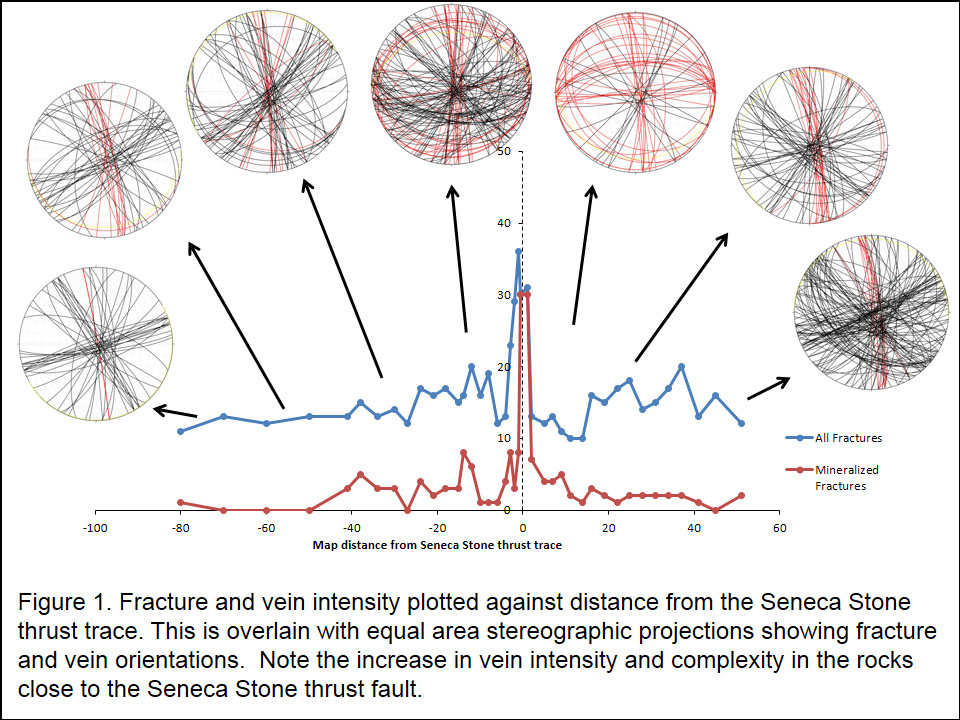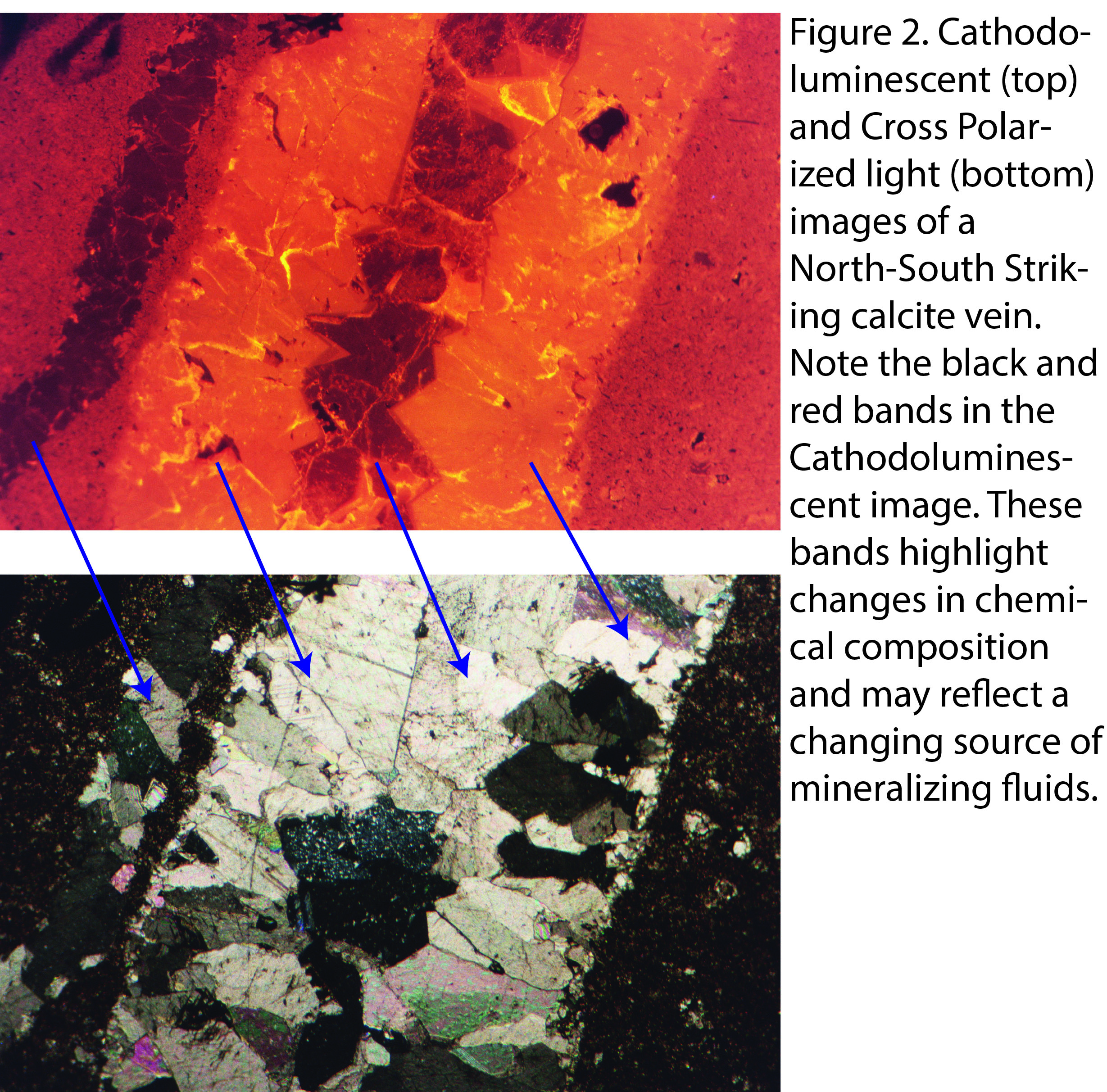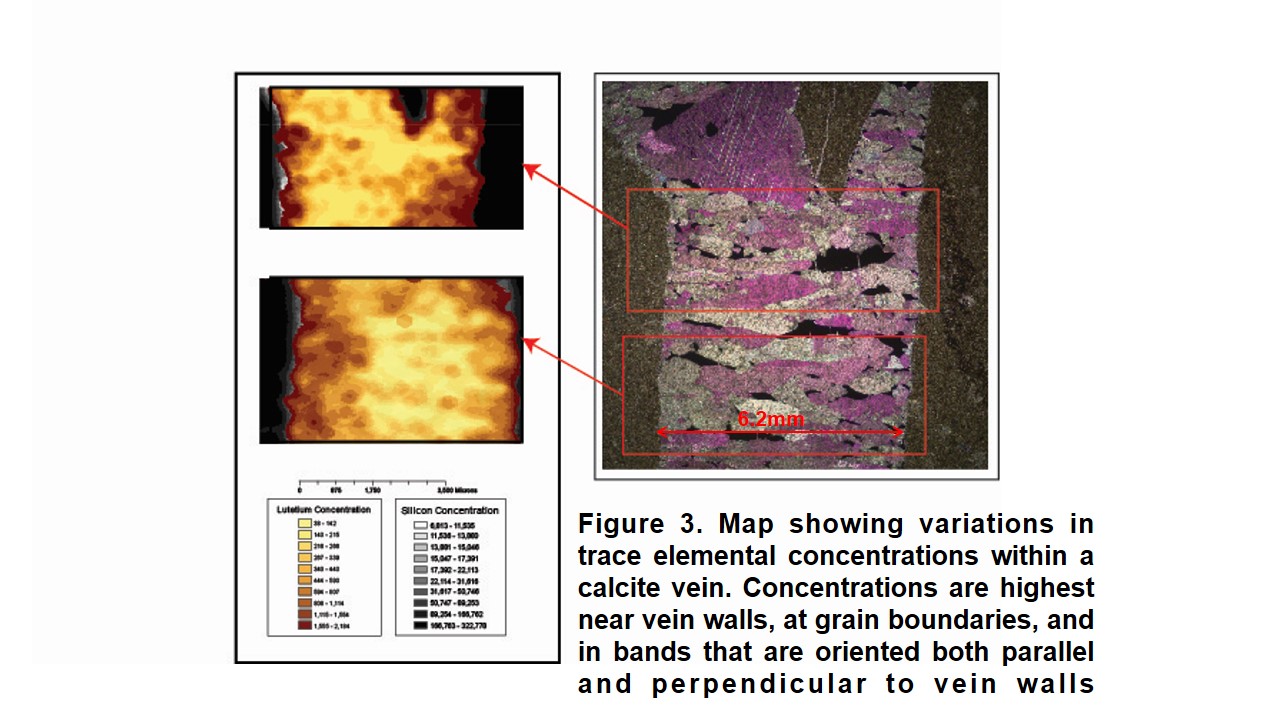58th Annual Report on Research 2013 Under Sponsorship of the ACS Petroleum Research Fund
Reports: ND851202-ND8: Fluid Flow Analysis in Fractured Rock using Structural Geometry and Geochemical Tracers (Noble Gas Isotopes and Trace Elements)
Gautam Mitra, PhD, University of Rochester
Background
This research is aimed atunderstanding fluid flow through low permeability rock formations, specificallyon how faults and fractures affect fluid flow. The work has implications forhydrocarbon exploration in shales and mudstones and in utilization of such"tight" formations as seals for geologic carbon sequestration. Despiteconsiderable research it is still difficult to predict the conduits that fluidswill follow while migrating in the subsurface. Our research on therelationships between folds, faults, fractures, and fluid flow highlights theimportance of the fault-fracture system as a conduit for fluid flow. We havefound an intimate relationship between fault zones, fracture development andfluid pumping, even in the earliest stages of fault zone development.
Research Focus & Methods
The three major topics we are pursuing are: (1) developingan understanding of how regional structures affect the fracture network presentin the Appalachian Plateau; (2) evaluating how burial and tectonic historycreated and altered the fracture network; and (3) determining the relativeimportance of fractures and faults as conduits for subsurface fluid flow . Ourresearch focuses on the carbonates and shales of the middle-Devonian Hamiltongroup, which outcrop across the Appalachian Plateau. These rocks are gentlyfolded and faulted, and display a network of extension fractures (joints) andshear fractures everywhere across this region.
This year, we collected a suite ofsamples of calcite veins from rock quarries, as well as drill core from wellsthrough the Devonian section: 6 wells in New York and 3 in Pennsylvania. Ineach core, we also carefully recorded lithology and structural characteristicsof fractures. Samples were analyzed in the laboratory using optical microscopy,cathodoluminescence (CL) microscopy, scanning electron microscopy (SEM), fluidinclusion analysis and geothermometry, and trace elemental mapping withcryogenic laser ablation ICP-MS.
Wealso began a study of the fracture network near a large fault zone,looking forinsight into the interactions between large-scale structures and the regionalfracture network. We focused our sample collection around the Seneca Stonethrust fault, an excellent example of a low strain fault that is well exposedin a quarry near Seneca Falls, NY. A well-developed damage zone surrounds thissmall offset (~5m) thrust fault where it cuts up-section from the Onondagalimestone into the Marcellus shale. We mapped and collected samples in andaround this fault zone, recording the characteristics of over 3000 fracturesand collecting over 100 samples. Our field studies focused on identifying,mapping, and categorizing sets of extensional and shear fractures, determiningrelative ages of fracture sets, and collecting samples of mineralized fracturesfor laboratory analysis.
Preliminary Results
We have observed at least 7 different sets offractures that can be found in outcrop throughout the Appalachian Plateau. Ingeneral, fractures in outcrop are less likely to be mineralized than thosefound within core. However, the Seneca Stone thrust damage zone ischaracterized by a dramatic increase in the density of calcite veins (Figure1). These calcite veins dip gently (22û) toward both North and South and strikeE-W (080û), roughly parallel to the strike of the Seneca Stone thrust. Outsideof the damage zone, deformation features include: steeply dipping joints thatstrike 071° and 145°; steeply dipping veins that strike 355° and 066°, and E-Wstriking stylolites. Cross cutting relationships indicate that veins striking066û (V1) formed first and were followed by a period during which N-S strikingveins (V2), gently dipping E-W striking veins and stylolites grew cyclically.In particular, the cross-cutting relationships between stylolites and veinssuggest that veins grew during multiple events.
Opticalmicroscopy of veins shows euhedral calcite crystals and some pyrobitumen.Vein texture indicates growth from the walls of the vein towards the center,i.e. syntaxial crystal growth. Cathodoluminescence microscopy coupled withCryogenic laser ablation ICP-MS suggest that veins striking N-S (V-2) formedfrom a different fluid source than those striking 066° (V-1). The older V-1veins luminesce more weakly than younger V2 veins and show a different Ca-Mgratio. Because the V1 veins are older, it is possible that these veins formedfrom an earlier and hotter fluid.
There are also differences inchemical composition within individual veins. Segments of V2 veins luminescebrightly, while other segments remain very dark-indicating that these crystalsmight contain different elemental compositions (Figure 2). These changes inluminescence are not accompanied by an obvious optical change; grain boundariesto not mark changes in chemical composition. We have produced severalmicrosampling elemental maps highlighting changes in chemical concentrations;variations in luminescence appear to be linked to changes in trace elementconcentration (Figure 3). While more data is forthcoming, these results suggestthat veins may have complex growth histories that involve multiple mineralizingevents. The data also suggest that "healed" veins may re-open and act asconduits for geologic fluids.
Impact and Future work
TheACS-PRF New Directions grant has allowed us to study some of these fundamentalquestions using new techniques and to integrate structural geology withgeochemistry. One Masters student (completed) and one Ph.D. student (ongoing)have been partially supported on this grant; five abstracts have beenpublished. The experience gained by the PI in this project has helped him tostart working on similar problems of fluid flow in the Sevier fold-thrust beltin Utah using a combination of structural and geochemical tools.
There are many unanswered questionsand abundant room for improving our fundamental understanding of subsurfacefluid flow processes. We will continue our examination of the fracture networkin the Appalachian basin and use geochemical techniques to analyze the veinsthat fill these fractures. Now that we have characterized how fracturesinteract with large-scale structures, we will focus our work on the role ofburial and exhumation history. By applying our toolbox of geochemical methodswe will continue to study how the fracture fabric in the Appalachian plateauchanges and determine if these changes altered the way in which fracturesconducted fluids.
Copyright © 2014 American Chemical Society














